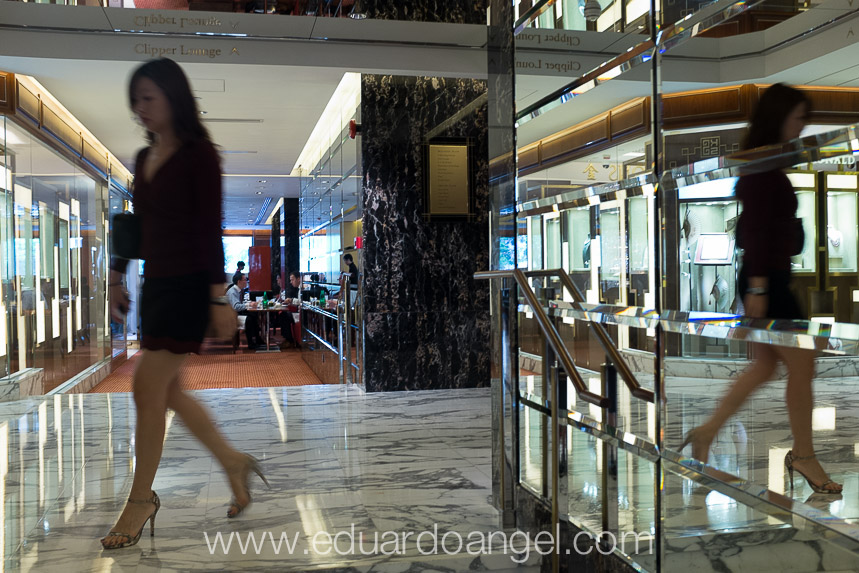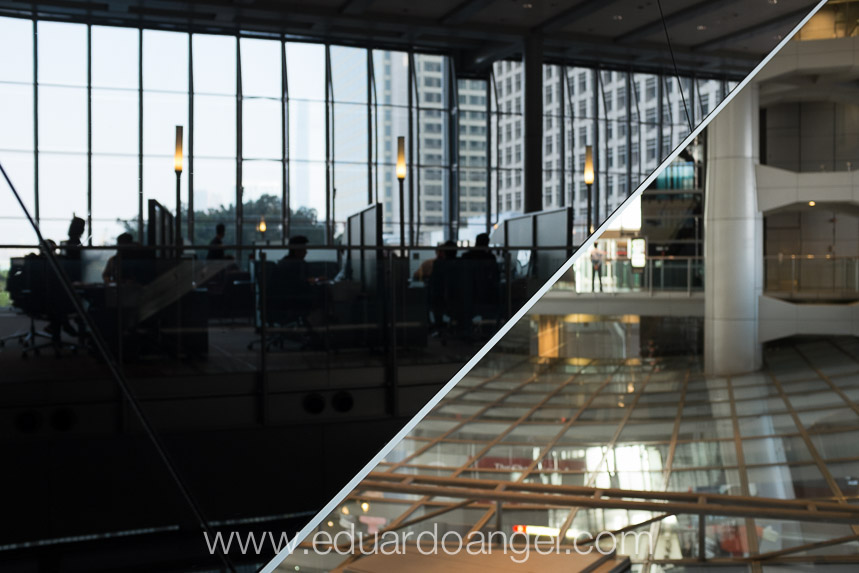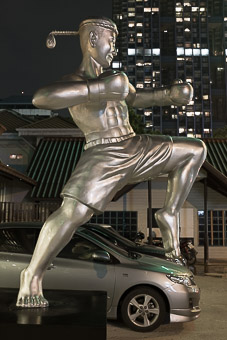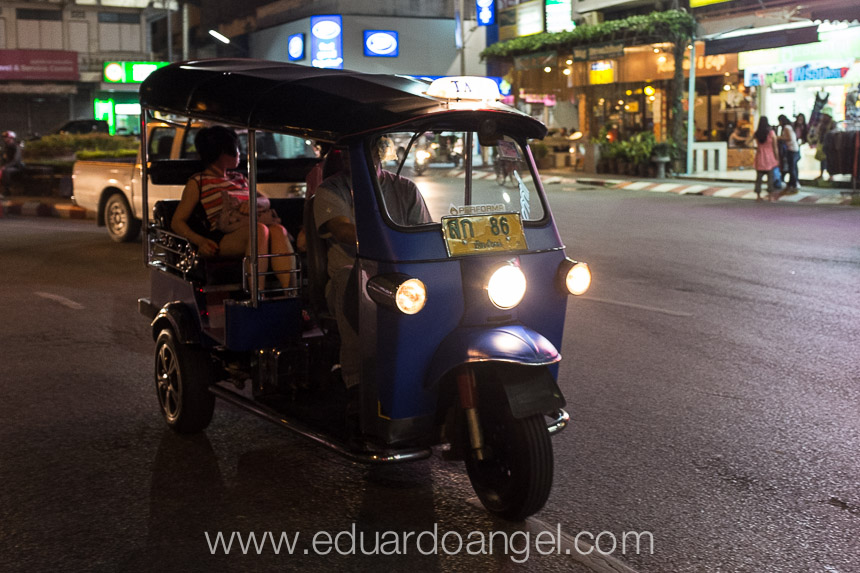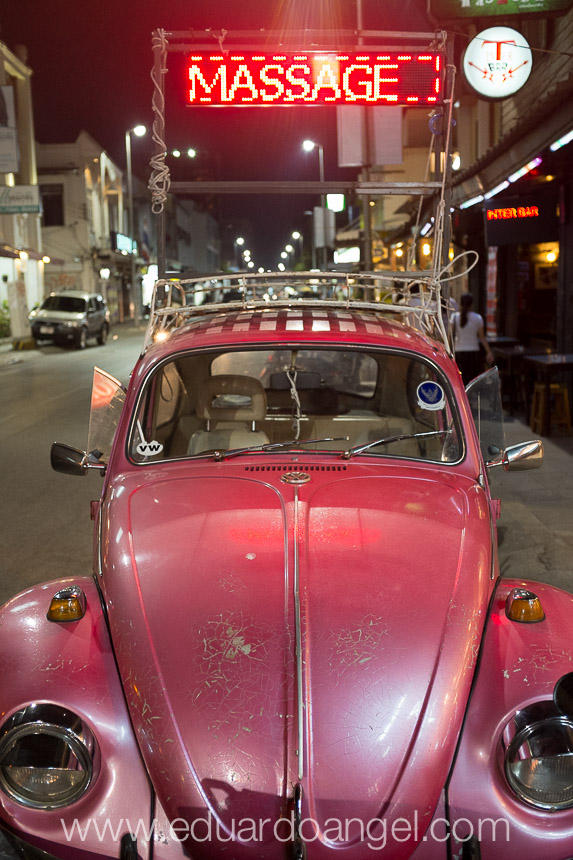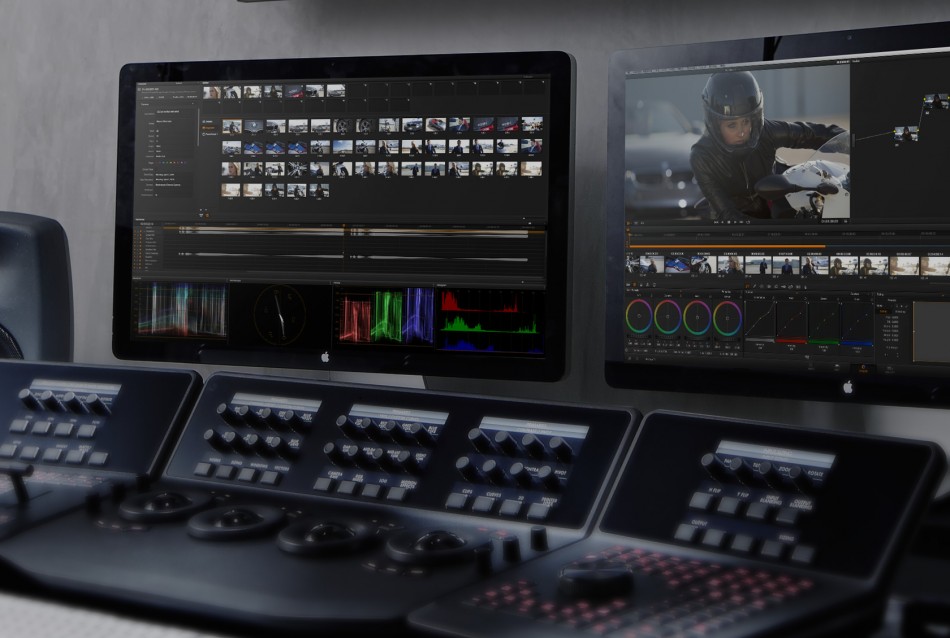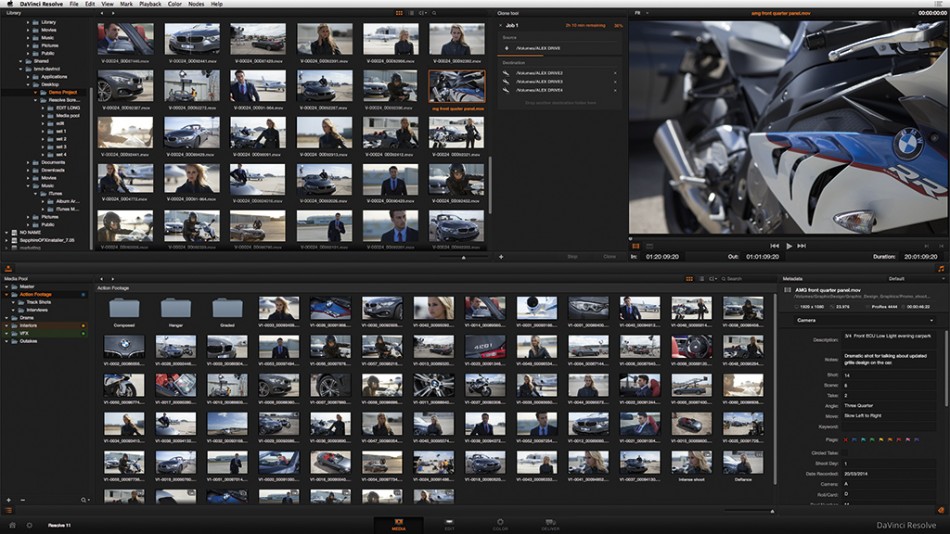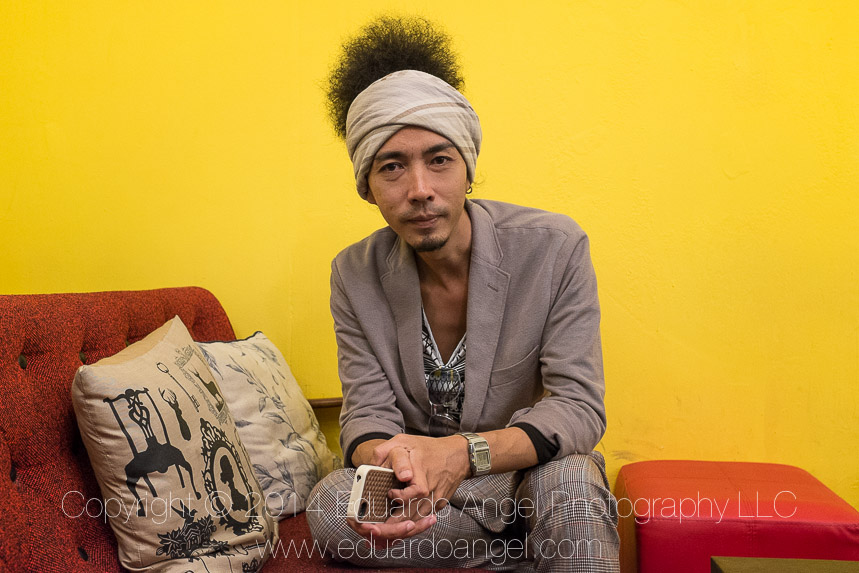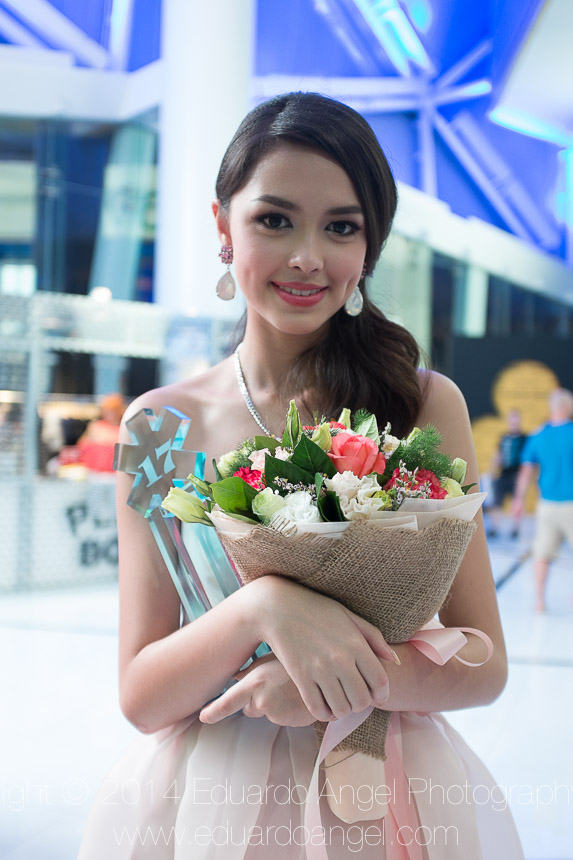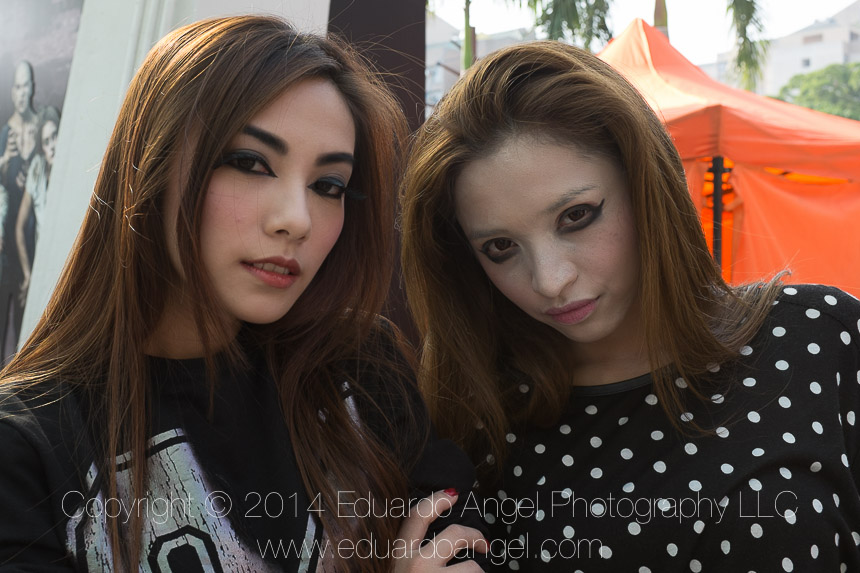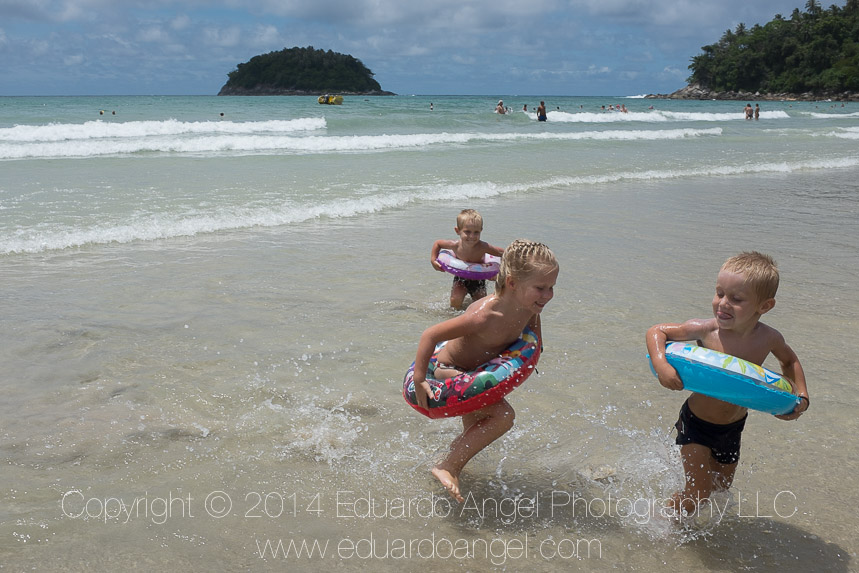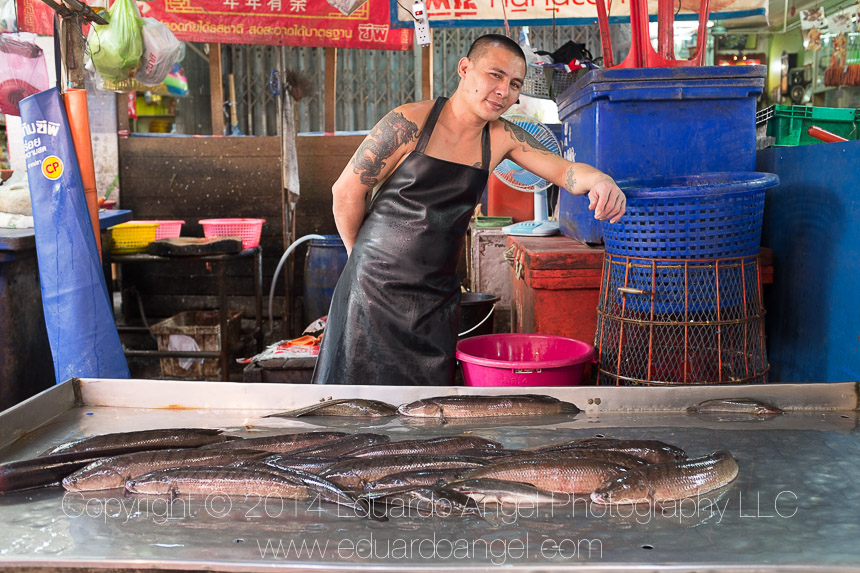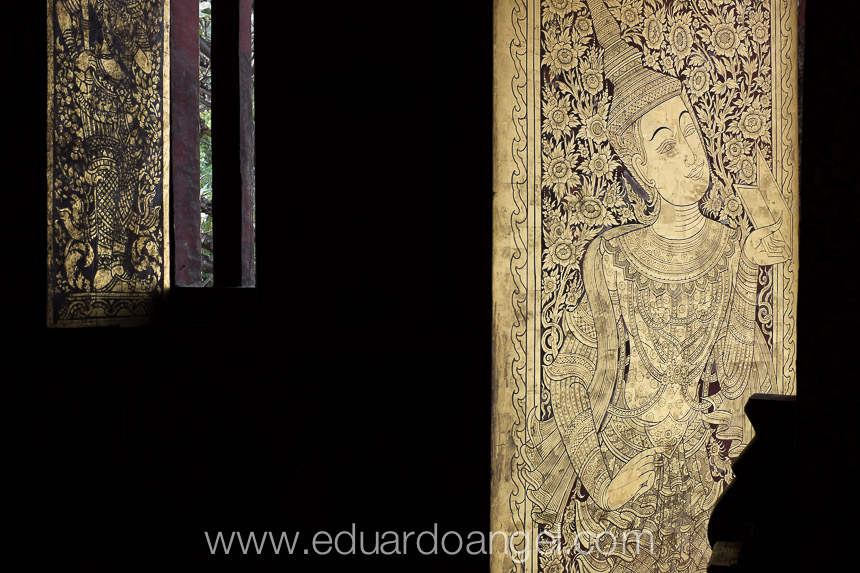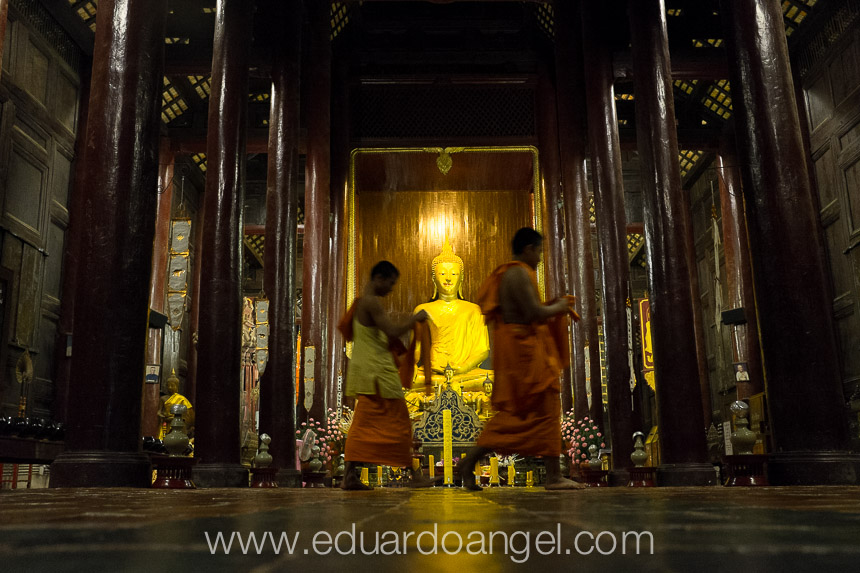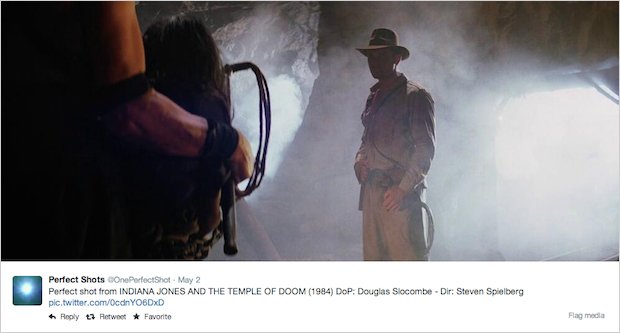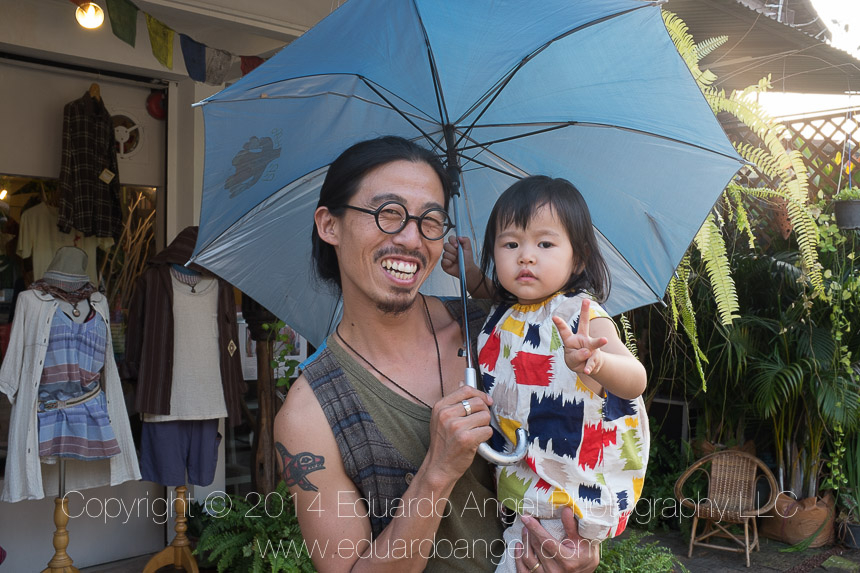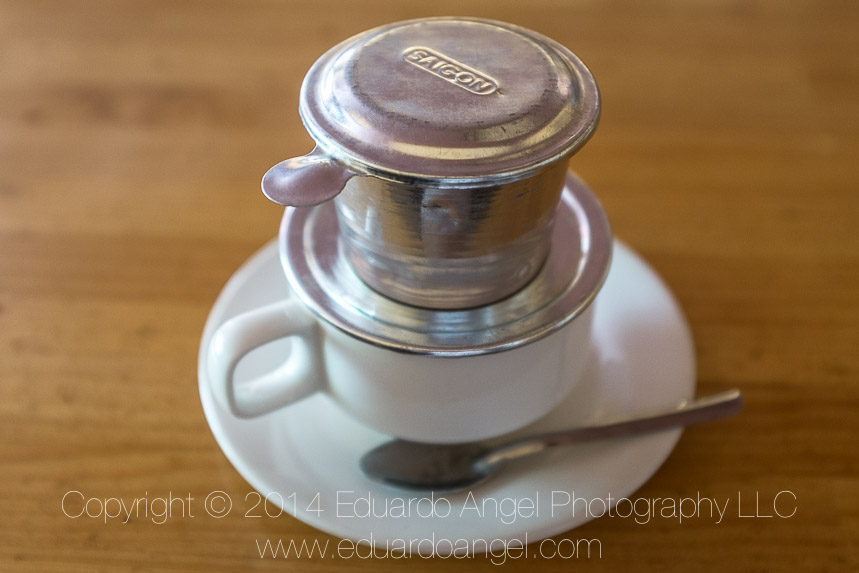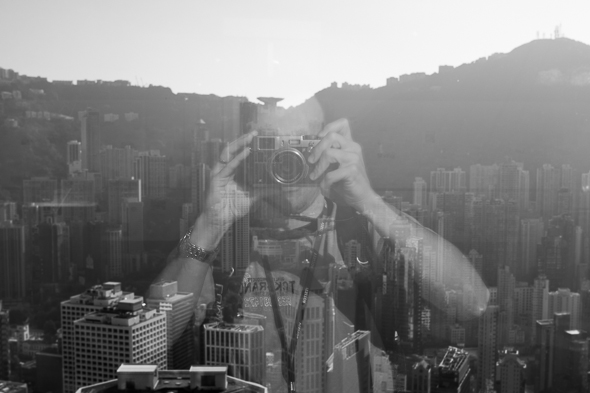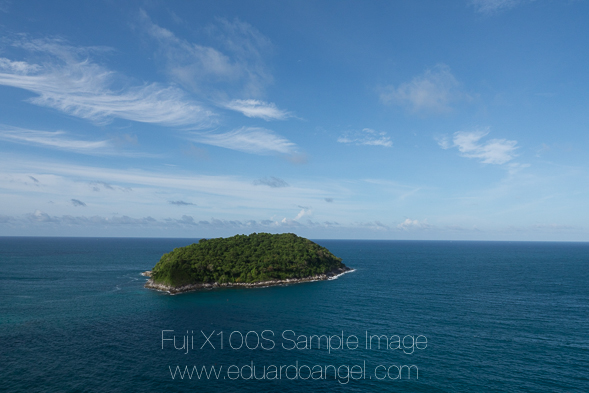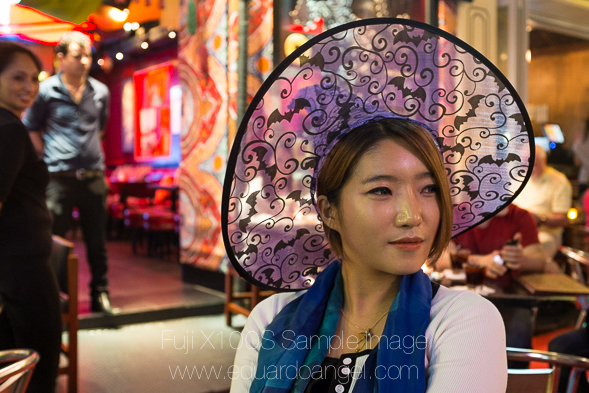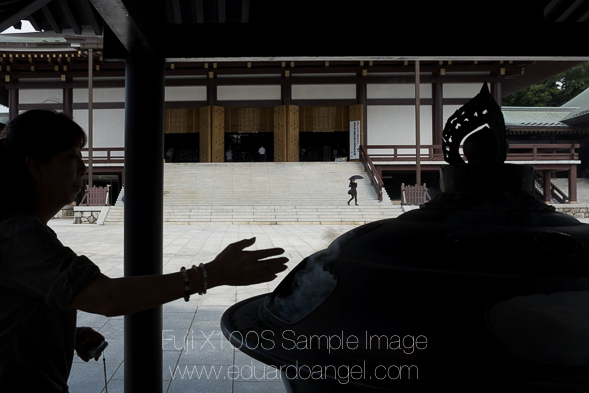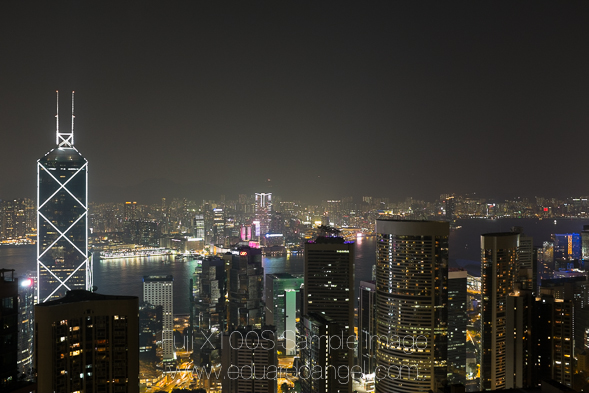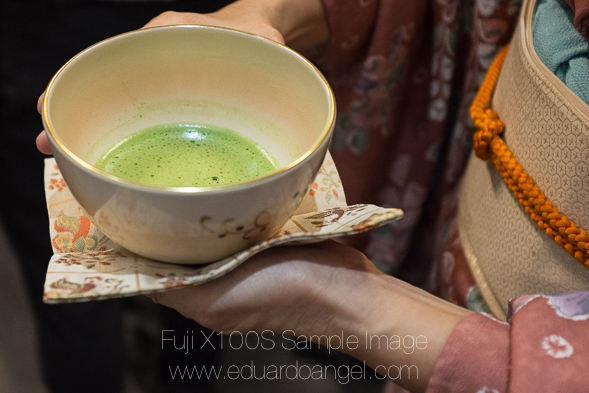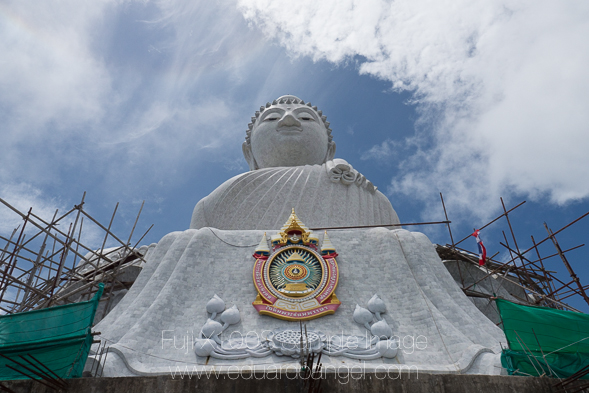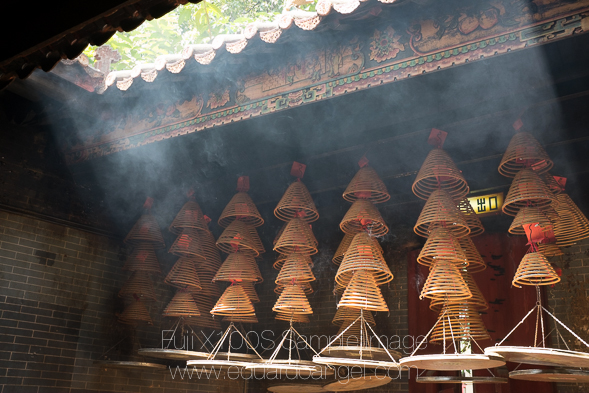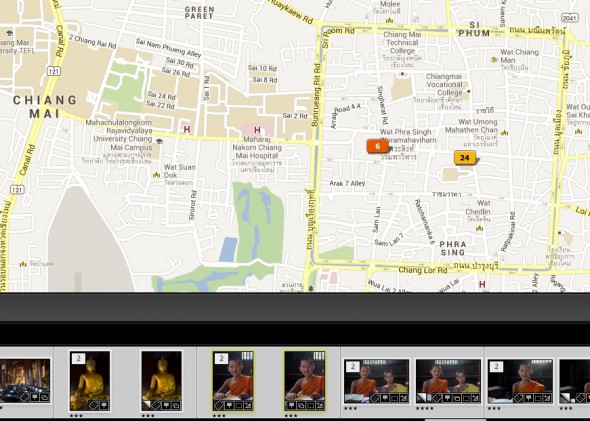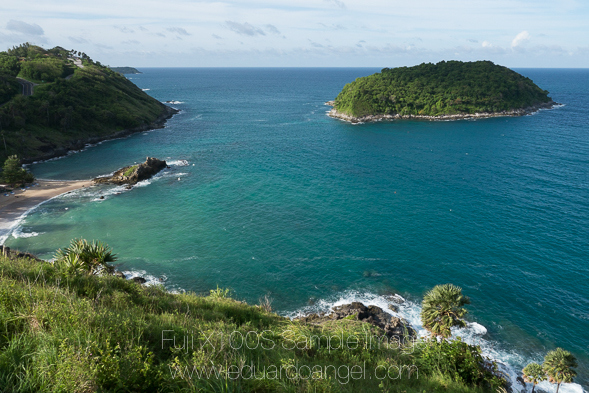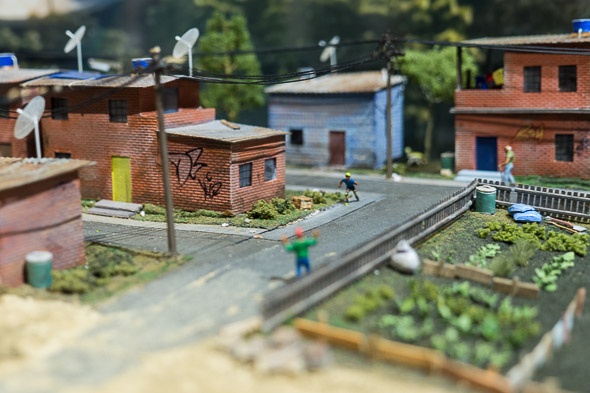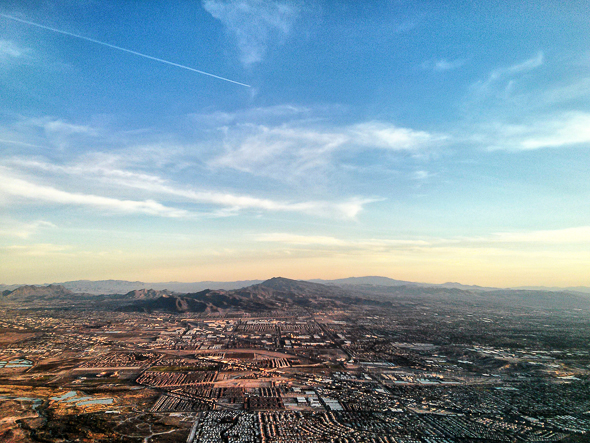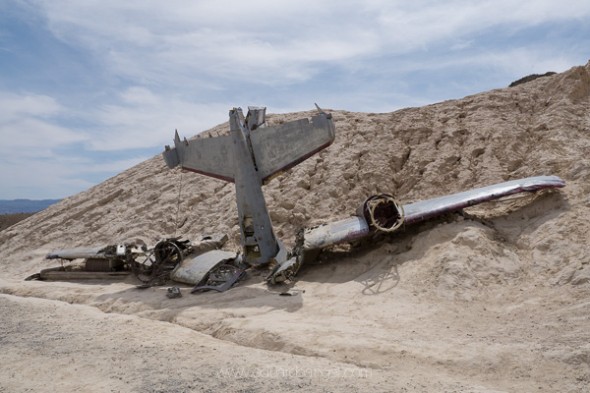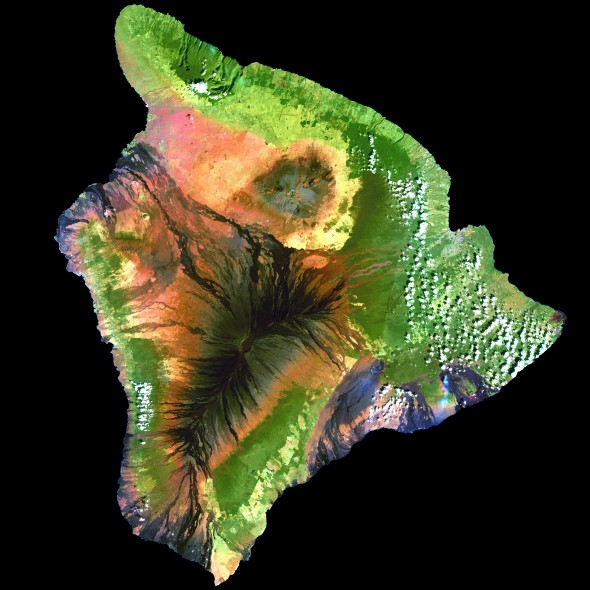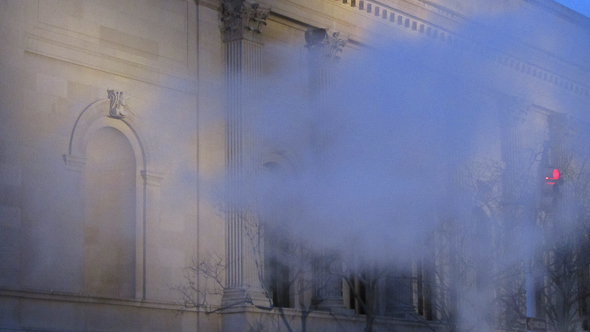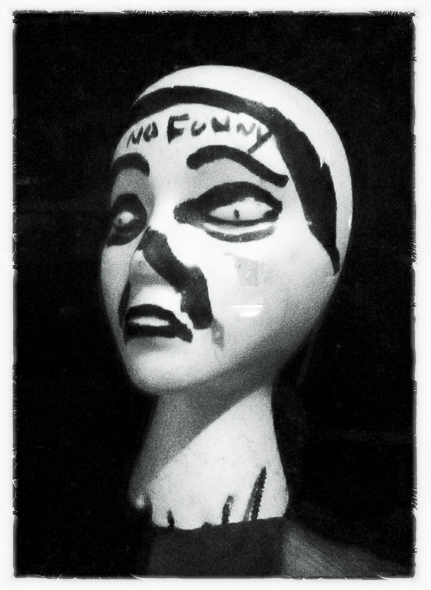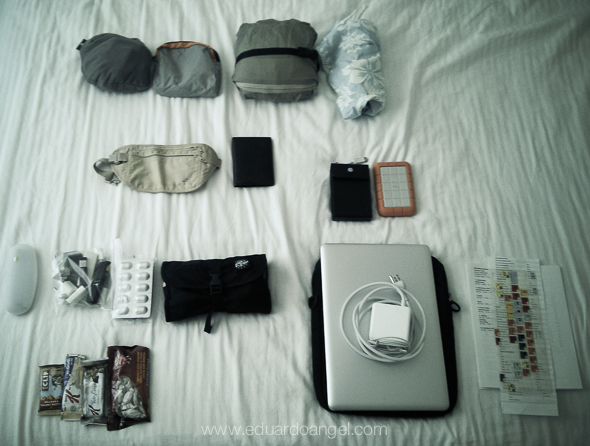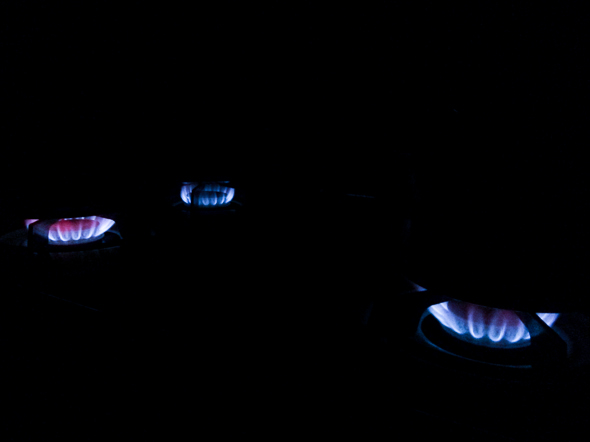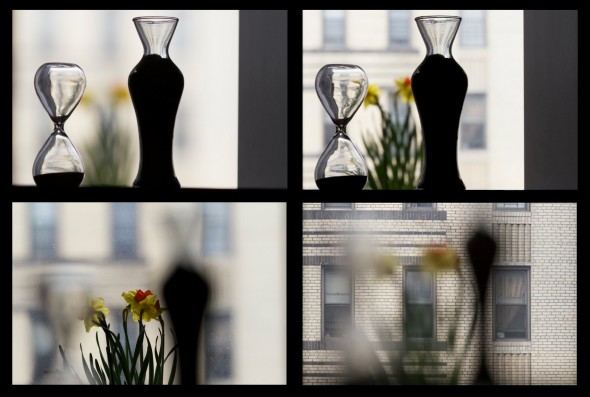Photography
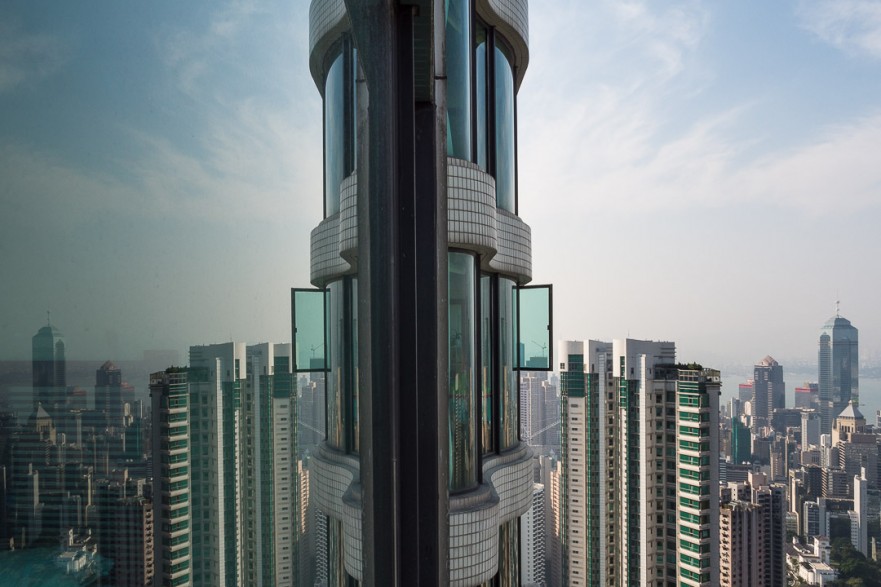
Hong Kong: The quiet city.
The quiet city.
Comparisons between Manhattan and Hong Kong are inevitable: Both are islands, have many skyscrapers, high-population densities, and crazy real estate prices. Both are magnets for money and people looking for opportunities. And both offer food prices that range from dirt cheap to insanely expensive. Hong Kong has 7.1 million people and a density of 17,024 people/sq. mile while New York has a population of 8.1 million and 27,550 people/sq. mile.
But, Hong Kong is different. VERY different. From the time you touch down, it takes less than an hour to move through immigration, travel to the baggage claim, and board the spotless and quiet express train. That’s easily the wait time at JFK’s taxi line. In Hong Kong every driver spoke English, helped us with our bags, turned the meter on without our request, knew the most efficient way to our destination, charged the exact fare and gave us exact change. I can’t recall the last time I didn’t have to give step-by-step directions to the airport’s cab driver in NY. Then, of course, I have to pay $60 for the privilege of doing their job. My wonderful taxi experience cost $10 in Hong Kong. The city is clean, modern, and efficient. It feels safe and full of opportunities. Most subway stations have shopping malls attached, with spotless restrooms, restaurants, and parks. It shocked me how quiet the city is. In three days we didn’t hear one siren. I wish I could say the same about Brooklyn.
Amazingly something like 80% of the island is a natural reserve. If you get tired of city life, you could simply take the 30-minute express bus for only one dollar to Stanley market, which is on the opposite side of the island and offers landscapes that compete with some of the best I saw in Vietnam. I recommend all visitors take the super-convenient double decker tram system and the a spectacular ferry ride. Each will cost 30 cents in American currency making them one of the best tourist bargains in the world.
Building the puzzle
Traveling to me is like building a puzzle without a reference image. Or, perhaps a chess game where you are one of the pieces moving from one place to another, deciphering maps, and memorizing names with 15 characters that look just like all the other names. It is all a fascinating game played in real time, without cheat codes, or escape menus. Just you and the new place you are about to discover.
There are tourists and there are travelers. The tourists are afraid of the unknown, the different. You see them eating at Subway or McDonald’s right next to the local food market. I am a traveler. I adapt to local customs, eat what the locals eat, enjoy trying new things, push my boundaries, embrace feeling uncomfortable, and have a blast getting lost. There’s truly nothing like traveling to recharge the soul. I love to reconfirm every so often that people are good and generous by nature, and that the universal currency is not dollars or Euros, but smiles.
We truly appreciate your support for this and similar project by purchasing My Asia • Photo eBook (iPad)
The PDF Version is herePDF version is available here, and the printed version from Blurb is here.
Photography
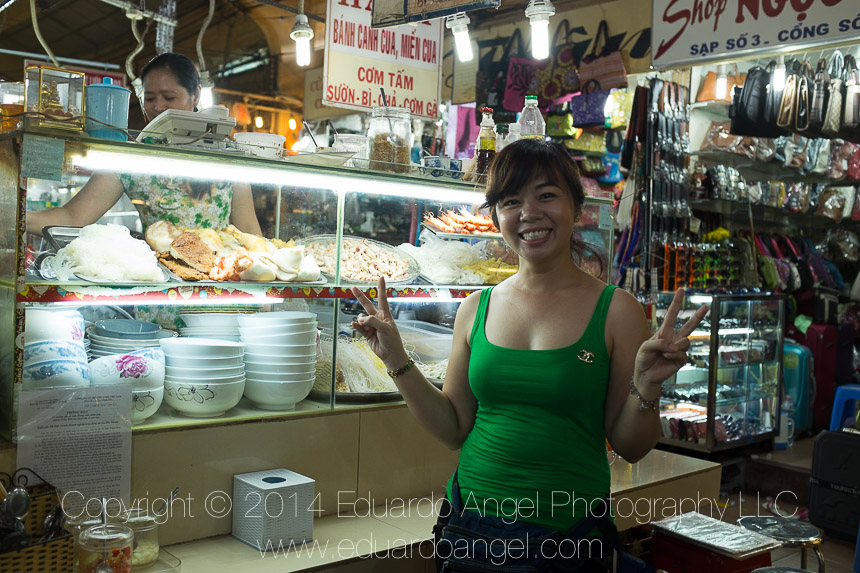
Sir, you are crazy! Welcome to Vietnam.
Sir, you are crazy!
My growing up in Colombia turned out to be a huge advantage for traveling in Asia. We Colombians and Asians have a lot in common. We can cross avenues with hundreds of motorcycles zooming past. We understand that sidewalks and stoplights are mostly symbolic. It’s in our blood that the asking price for an item is merely a suggestion and we can haggle until the end of time. We can smell danger coming. We can eat almost anything without getting poisoned. We have a superhuman ability to locate and exterminate bugs. Coming to Asia makes you realize that growing up in a third world country has key advantages.
In Ho Chi Minh City I received the best compliment ever: “Sir, you are crazy! You are like the American chef on TV!” The gentleman in question was referring to Anthony Bourdain and the reason for the wonderful reaction was simple. When traveling alone, I like to ask cab drivers to take me to THEIR favorite lunch or dinner spot. They always know the best places in town. My driver and I feasted on Pad Thai at the eatery where he takes his girlfriend. It was the best Pad Thai I’ve had in my life. And it cost $1.50.
Friends often wonder how I obtain access to so many interesting and often difficult-to-infiltrate places. The answer is fairly simple—I ask questions. One example: while having breakfast I asked my waitress for sightseeing recommendations. She sent me to the War Museum. There I saw three geisha-looking women entering a room. I went to see what was going on and I was told it was a private Tea Ceremony for the Japanese Consul. After a quick introduction and talking to the right person, I was invited to stay, and for four hours I witnessed a fascinating Japanese tradition at the War Museum in Ho Chi Minh City. All because I simply started asking questions
Halong Bay was breathtaking, but after Thailand, Vietnam was disappointing. Sadly, the vast majority of Vietnamese we dealt with were unnecessarily rude, or, at best, simply didn’t care about engaging in anything that didn’t represent money changing hands. I was told that this `is a common expression of independence. Vietnam has a cultural history of more than 20,000 years—that’s one of the longest continuous histories in the world. They have been the target of so many foreign aggressors that yelling “no!” to a foreigner must feel great. Unfortunately, tourists don’t understand, nor appreciate, this behavior and will increasingly choose friendlier countries like Thailand, Laos, Cambodia, and Singapore in which to spend their time and money.
At any major tourist destination it is nearly impossible to walk for more than 30 seconds without having to stop for someone taking a picture. The weapons of choice are iPhones shooting vertical video and tablets with very thick covers for stills.
Also trending are what I call the IVSTs (iPhone vertical video self-portrait tours). The culprit chooses the busiest walking intersection at a popular tourist destination and records themselves talking nonsense about the place. An example: “this is the largest temple in the world and it is very old.”
We truly appreciate your support for this and similar project by purchasing My Asia • Photo eBook (iPad)
The PDF Version is here PDF version is available here, and the printed version from Blurb is here.
Video

My Top Ten Favorite Articles of Last Week.
Starting last week, I’d like to share the best 10 articles I’ve read over the past week. I’ll try my best to stick to photo and film articles, but sometimes I might add cool and random stuff. If you have something that should be included please send it my way by email or Twitter.
10 tips for editing video in a thoughtful, compelling way http://bit.ly/1k8lfue via TED Blog
Improved 4K display support in OS X 10.9.3 http://bit.ly/1k8k9OW via Macworld
4K TV shipments skyrocketed last March, exceeding 1 million units http://bit.ly/1k8kDVs via Digital Trends
Lots of Sony news: Sony Ditches OLED TVs (again) to Concentrate on 4K Ultra HD http://bit.ly/1k8kjpw and Sony Sold 39 million Android Phones in 2013 http://bit.ly/1k8krW9 both via Digital Trends and Sony forecasts losses until 2015 after PC exit http://bbc.in/1k8knWy via BBC News
DaVinci Resolve 11 Adds Powerful Editing and Media Management Tools http://bit.ly/1k8kwsX via CineTechnica
The Best Marketing Decision You’ll Ever Make http://bit.ly/1siPIs6 via Inc.com
14 Powerful TED Talks by Photographers http://bit.ly/Rm4zom via Petapixel
The Special Effects in Only God Forgives http://bit.ly/1fP2gVU via Filmslie.com
10 Films In Which Actors Play Multiple Roles http://bit.ly/Rtfixb via Indiwire
News
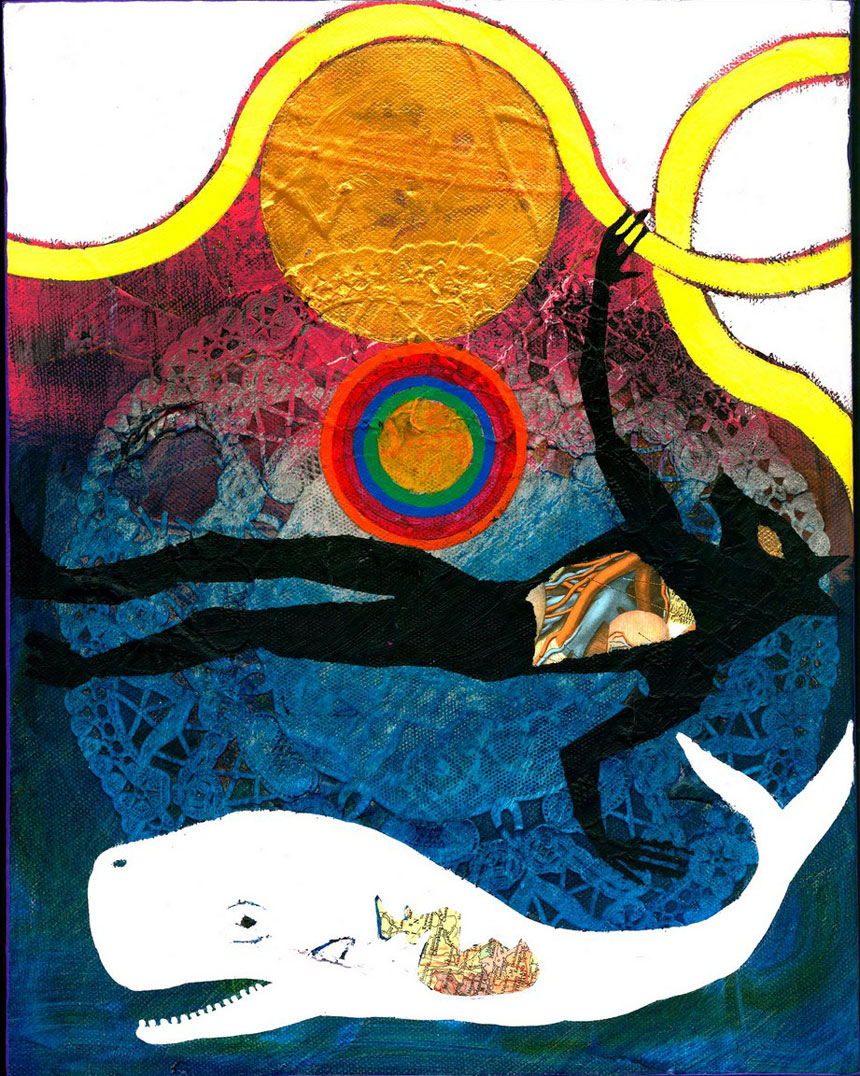
Thinking Big: Alice in Wonderland.
Thinking Big: Alice in Wonderland Kickstarter.
by Alice DuBois
William Blake, Diane Arbus, Walt Whitman, Frida Kahlo…So many artists we love now had a real struggle just to make ends meet. We wonder how we could do without Arbus’s incredible, fearless eye and Blake’s luminous vision of the woes and exaltations of humanity. However, their realities were difficult: Arbus had to teach to make ends meet when she should have had free reign to take all the photos she could, Whitman had to spend his own money to publish “Leaves Of Grass,” and Blake spent his life in a constant struggle, never getting paid well and never really being appreciated. Now they are all hailed as geniuses.
I’m a painter, and certainly not a genius, but I feel a real kinship with these artists and all the others who were, and are, faced with the struggle of making a living and staying true to their vision. I’ve been painting for 19 years, nine of which have been as a full-time artist. It’s been a real trial trying to make work that I feel is truly from the heart. I’ve struggled to make work that at least strikes a balance between what I want to do “from the heart” and what I know I can sell.
It’s been truly difficult, especially in these sour economic conditions, to make a living. I started out hoping to be my own sales person, using new technology to reach art lovers without the help of a gallery. But what I’ve come to realize is that this is too hard for me to do on my own. After nine years of making minimum wage with art that I feel is worth much more, I’d like to turn a corner in my career and partner with a gallery.
In order to make a break from this cycle of just making small, sellable art, I have a Kickstarter project to fund the creation of several larger pieces. My hope is that these paintings will help me attract a gallery that I can partner with. My goal is fairly modest—$2,000.
These funds will afford me the time and supplies to make some larger work. As of May 7 I’ve raised half of my fundraising goal—and there are just two weeks to go. I hope you will take a look at my Kickstarter video and my artwork and judge for yourself if my art is worth more than minimum wage.
Photography
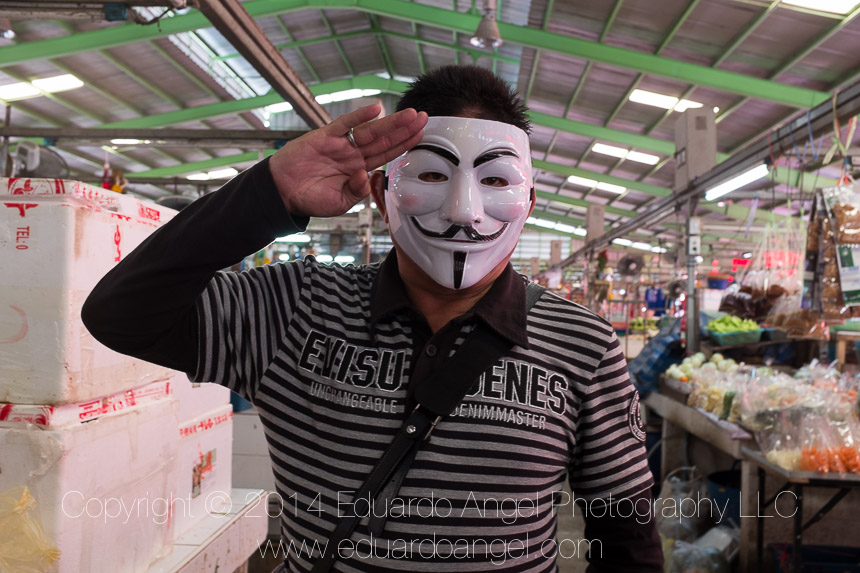
Thai people and the guardian of wealth.
The guardian of wealth.
Proud and humble don’t seem to fit in the same sentence but Thais are proud, yet humble, people. You can see it in their eyes, and the way they treat each other.
As in all my travels, my most rewarding and exciting experiences are the exchanges with locals. Spending quality time chatting with locals like Krit, a very hip computer animator, or Mr. Tanta, a very proud police officer, gave me a much deeper understanding of Thailand than any book, movie, or tourist tour could ever do.
I spent a lot of time talking with Buddhist monks who inevitably would ask my name and then ask what it means. Eduardo, for the record, means “the guardian or keeper of wealth, where wealth could be understood as knowledge.” Chatuphon, my 17-year-old friend photographed here means “the four blessings” which are: A long life, Be rich, Be strong, and Be healthy. I’d say that’s a powerful and meaningful name.
By far, the most fascinating character on this trip was Eak. Now in his mid 40s, Eak was born and raised in Switzerland by a Thai mother and Swiss father. He speaks PERFECT German, French, English, Thai as well as some Spanish. He visited Thailand for the first time when he was 20 years old and told me that he suffered a culture shock. “I didn’t understand why these people, my relatives included, chose to live under such poor conditions,” he told me.
After working for a very large and well-known corporation in Zurich, and making, according to him, “more money in one hour than what he now makes in three days,” he returned to Thailand to take care of his dying mother. “I was in shock for an entire year.” He now works as a driver in a boutique hotel in Phuket. Are you planning to go back to Zurich? I asked. “The life quality is here, but the money is there. I still don’t know what to chose.” I can certainly understand his answer.
Phuket is both an island and a province, the largest in Thailand and about the size of Singapore. Places like this are like paradise. No rocks, no corals, no trash, not even shells. Just very fine sand and body-temperature water so calm that you could mistake it for a pool. The only sounds are the waves crashing, a few birds chattering, and the occasional jet ski.
It seems that the only requirements to open a bar in Chiang Mai are a pool table, a fan, a bottle opener, and the willingness to ask foreigners if they are interested in receiving a massage.
We truly appreciate your support for this and similar project by purchasing My Asia • Photo eBook (iPad)
The PDF Version is here PDF version is available here, and the printed version from Blurb is here.
Photography
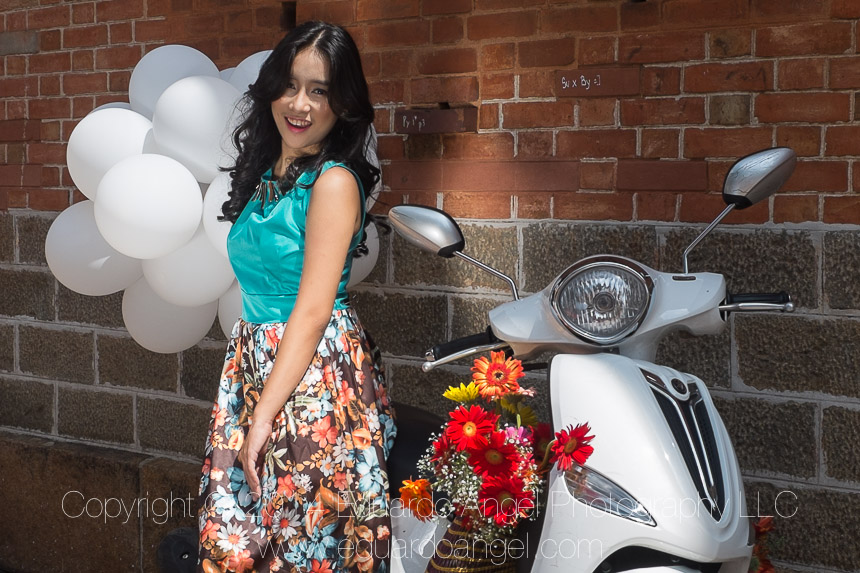
Traveling to a foreign country is like falling in love.
Falling in love.
I’ve always believed that traveling to a foreign country is like falling in love. All your senses are heightened; everything is new, exciting, and mysterious. You can almost taste the colors and touch the smells. You experience mundane things like the rain or city lights from a different perspective. This is especially true in places where I don’t speak the language. It is wonderful to be unable to understand most billboards and ads!
Architectonically, Bangkok is similar to South American capitals like Bogota or Santiago, but hotter. Other key differences include an efficient subway, an impeccable elevated train, express buses, and a wonderful river taxi system (local, semi express, and express). The signs and ways to purchase tickets are so well organized that even without help one can understand and navigate the system right away. The city is shockingly clean, safe, and well organized. When compared to New York and other “world capitals,” Bangkok is years ahead.
The mid-sized Lumphini Park is a small-scale version of Central Park right at the heart of the city. I arrived at sunrise, looking to photograph people jogging and meditating, and, indeed, I found that. However, I also spent some time with a tai chi master, was invited to have breakfast with a group of retired Chinese folks, and photographed a woman who in the 70’s was the number-one dancer in Thailand and number-three in all of Southeast Asia. Now she teaches others how to dance tango. She even gave me an autographed photo of herself!
The food in Thailand is phenomenally tasty and affordable. I often had lunch with an appetizer, two entrees, dessert, and a Pepsi. All for a bit less than three dollars, including tip. Here’s another tip: I strongly recommend that you NEVER peek behind a street vendor’s shop. It ain’t pretty. Trust me.
It always takes a few days to flush the “New Yorker” in me out of my system. I want things to be quick and efficient, and I hate to wait. People in Thailand, especially outside Bangkok, are NOT in a rush. It can be frustrating trying to squeeze in tiny corridors with hundreds of people moving slowly, or waiting forever for someone to show up. The only real option is to adapt, slow down, and go with the flow.
If you want to discover the local habits and avoid touristic clichés, Khlong Toei Market is the real deal. For two hours I was the only foreigner and the only one with a camera. A traveler’s paradise. It’s a short walk from the National Convention Center and it’s challenging, but it’s totally worth a visit. The fish and crabs were still alive, the calamari was swimming in its own ink and the pigs’ heads were still bleeding. Don’t wear flip-flops or sandals—what looks like blood is blood. Wear a shirt that you can wash right away, and plan to take a long shower immediately after visiting this market. The smells will stick to you, but so will the experience.
The first few days of visiting Buddhist wats are fascinating. All those colors and details. So much history, and so many traditions I can’t even begin to understand. The Emerald Buddha (which is really carved from green jade) was first DISCOVERED in 1434. The sacred image wears one of three seasonal costumes: Summer, Rainy Season, and Winter.
I was told that in Buddhist wats, the bells toll three times a day: once to announce the start of the day, once at noon, and once to signal the end of the day. Monks are prohibited from growing their own food, storing their own provisions, or cooking their own meals. I was very surprised to know that some of them are not vegetarians. In Thailand, they rely on whatever is freely given to them by others, and this might include meat. The monks eat twice a day—breakfast at 7 a.m. and lunch around noon. After that, they are only allowed to drink water and other liquids, but they can’t eat solid food and they can’t store food overnight.
After a few days of visiting wats, your eyes and mind stop seeing—you are there, wanting to be moved and inspired, but the feeling is harder and harder to recapture. In Europe we can get overloaded by visiting too many churches and museums in too short a time. In Asia, one can quickly experience wat and crowd overload. Be sure to enjoy those first few days of innocence and wonder.
Bangkok’s Chinatown is like the opening sequence from the 1994 film Chungking Express—chaotic, overcrowded, packed with long and narrow hallways, and hundreds of people walking extremely slowly. The two competing shopping malls are “China World” and “India Emporium.” It seems like a good commercial representation of the world.
We truly appreciate your support for this and similar project by purchasing My Asia • Photo eBook (iPad)
The PDF Version is here PDF version is available here, and the printed version from Blurb is here.
News

My Top Ten Favorite Articles of Last Week.
Starting today, I’d like to share the best 10 articles I’ve read over the past week. I’ll try my best to stick to photo and film articles, but sometimes I might add cool and random stuff like this http://bit.ly/1siMS69 or this http://bit.ly/1siPfpD.
If you have something that should be included please send it my way by email or Twitter.
So, here are my top ten favorite articles of last week, in no particular order. Let’s see how this goes.
1. Sony tape smashes storage record http://bbc.in/1siNoRD via BBC News and Sony’s in a ‘bag of hurt’ because of Blu-ray http://bit.ly/1siKWe9 via The Verge
2. By 2020 Apple Won’t Be A Top-3 Tech Company http://tcrn.ch/1siLaBY via TechCrunch
3. Fog, Smoke, & Haze: The Swiss Army Knives of Cinematography Tools http://bit.ly/1siNqZK via No Film School
4. One Perfect Shot Twitter Account Reduces Movies Into a Single, ‘Perfect’ Frame http://bit.ly/1siLRLn via Petapixel
5. George Steinmetz Wonders: Was It Worth Getting Arrested for National Geographic Cover Story Photos? http://bit.ly/1siM0OY via PDNPulse
6. What Hardware do you Need to Run Stuff at 4K Resolution on your PC? http://bit.ly/1siN3yr via Digital Trends
7. Mid-2014 MacBook Air SSDs Run Much Slower, New Benchmarks Show http://bit.ly/1siNlVW via Digital Trends
8. Negotiate like a Pro by Acting like a Child http://bit.ly/1siLLnc via 99U
9. Funny TED Talk Spoof for an App that Turns Photos Into Music http://bit.ly/1siPO2X via Petapixel
10. Managing Creativity: Lessons from Pixar and Disney Animation http://bit.ly/1i7Q2lB via Harvard Business Review
Photography

From New York to Tokyo. Fanning the smoke.
Fanning the smoke.
My visit to Japan wasn’t planned. My Delta flight from JFK to Tokyo was delayed and I missed my connecting flight. With 24 hours at my disposal I took this impasse as an early and welcomed present. My brief visit to Japan was smooth and easy. Everything is properly organized, scheduled, packaged, and explained. The people are so polite and friendly that I felt like a celebrity everywhere I went. So many folks were so happy that I wondered if this was all just a performance!
If you are ever stranded near Narita International Airport, it doesn’t make a lot of sense to go to Tokyo unless you have at least 12 hours available “inland.” Additionally, my wife and I have planned to visit Tokyo together for a long time, so I didn’t want to spoil our dream destination. I chose going instead to the magnificent Naritasan Shinshoji Temple.
It was deeply moving to see people of all ages at the temple, all showing a sincere and profound respect for their surroundings. Visitors washed their hands at the purification fountain and some even rinsed their mouths before entering the temple.
Americans are impressed with buildings or furniture that’s one-hundred years old. Europeans are proud of their four-hundred-year-old cathedrals. Here, you can witness one-thousand-year-old temples and truly ancient objects (Naritasan was built in 940 CE). You can feel history and tradition in the air, which, from a distance, smells like wood and incense. I later realized it is customary to burn incense and offer a prayer, then extinguish the flame by waving the hands, and fanning some of the smoke toward the person, as the smoke is believed to have healing powers.
Many religions believe that burning incense is good for the soul, but in Japan it is also an indicator of refined taste. Seeing my amazement, and perhaps all the time that I spent trying to capture the essence of the moment with a tiny camera, one of the temple keepers approached me. I assumed he was kicking me out. On the contrary, he was eager to see the images I was taking and more than happy to answer my endless questions. During our brief and fascinating conversation he mentioned that during World War II, most bells in Japan were melted down to make weapons and that 70% of all of Japan’s incense is manufactured on one tiny island south of Osaka called Awaji.
A few more interesting snippets about my brief time in Japan: Contrary to what I have read over the years about the country and my experience with Japanese people I have met on the road, I was a bit surprised by the lack of people speaking English. Case in point, high school students couldn’t understand me when I asked for directions. One associates Japan with fish and sushi, but I saw and ate more meat in Japan than in any other country, except Argentina. Finally, what’s with the heated toilets? If there’s a cultural explanation for this, please shoot me an email.
The Intro to this project is available here.
We truly appreciate your support for this and similar project by purchasing My Asia • Photo eBook (iPad)
The PDF Version is herePDF version is available here, and the printed version from Blurb is here.
Photography
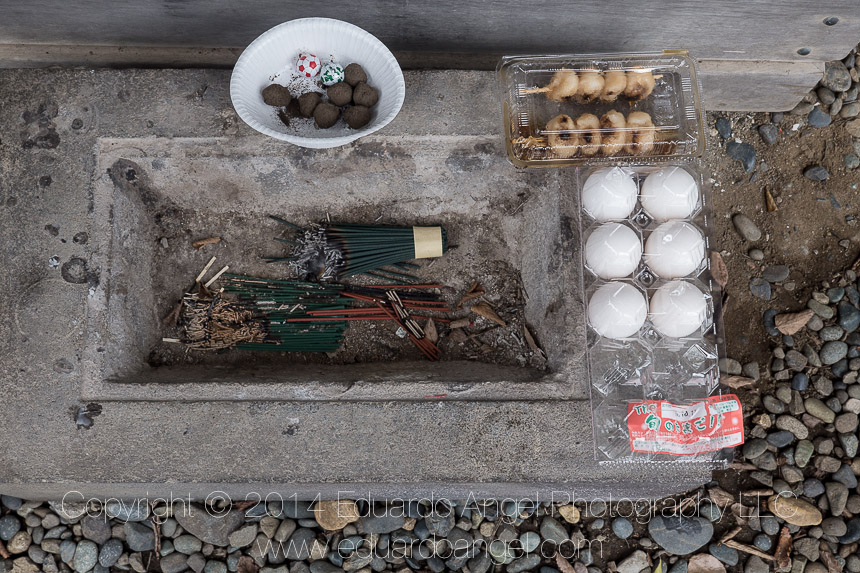
Letting instinct be my guide through Southeast Asia.
Letting instinct be my guide.
I approached my first trip to Southeast Asia in a different manner than my previous international trips. Even though I purchased the airplane tickets back in December, about 10 months before departure, I only booked hotels for the first two nights in each city. I left the remaining nights to chance. Unlike previous trips, I purposely didn’t research, map out, or schedule anything. Every morning I would get lost for a few hours by letting my instinct be my guide. Unlike my hectic life in New York City, where every day and week is carefully planned and literally every minute maximized, I wanted to drastically change gears and slow down, allowing life, and light, to hold my hand and walk me through uncertainty.
As always, I was hunting for meaningful images, beautiful faces, and remarkable locations. While doing that, I was tasting new, affordable, and outstanding food.
As I walked through the cities, I was mentally writing this journal, hoping it would inform and enhance my images. I chose not to shoot more than a few minutes of video during this trip as it would take a more rigorous approach, and it certainly would require more time and gear to do it right. As my only tool I used a tiny Fuji X100S.
The final product is a truly multimedia piece; ambient sounds recorded by us with an H4n, a few video clips, my journal transformed into a voice-over narration, and many photographs, some of which became a book carefully edited and beautifully designed by the super talented Gaia Danieli.
Part 1 (From New York to Tokyo) is now available here.
We truly appreciate your support for this and similar project by purchasing My Asia • Photo eBook (iPad)
The PDF Version is herePDF version is available here, and the printed version from Blurb is here.
Photography

My Asia • eBook (iPad version)
There are tourists and there are travelers. The tourists are afraid of the unknown, the different. You see them eating at Subway or McDonald’s right next to the local food market. Travelers adapt to local customs, eat what the locals eat, enjoy trying new things, push their boundaries, embrace feeling uncomfortable, and have a blast getting lost.
“This magical book is a true traveler’s photo journal in South East Asia.” The Armchair Traveler.
Click here to purchase My Asia • Photo eBook (iPad)now.
The PDF version is available here, and the printed version from Blurb is here.
Video
Adobe Creative Cloud for Photographers.
We recently shared a very good deal on Adobe’s Creative Cloud for Students and Teachers ($16.58 per month for ALL the Adobe applications). Since we use Premiere Pro, SpeedGrade, In Design and other apps this solution makes complete financial sense for us. But, what if you are a photographer using only Lightroom and Photoshop?
Photography
Photoshelter + Adobe Lightroom = Awesomeness
Many of you know how much I love Adobe Lightroom. However, what some of you may not know is that I have been using PhotoShelter as my main online portfolio for my stills work for several years.
Why am I writing this post? One reason: (more…)
Video
2013 Roundup and our favorite Top 10 Lists.
If there’s one thing we love, it’s lists! Here’s a short and sweet compilation of our favorite “Top 10” lists from 2013. (more…)
Photography
Visual Serendipity Week 84. South American Sunset.
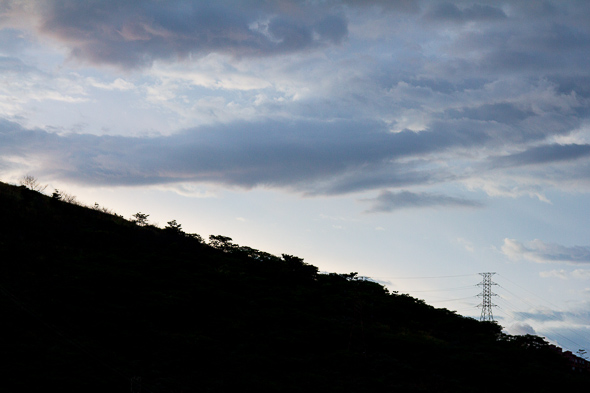
A fairly typical sunset in Cali, Colombia. I’ve always liked the “watercolor” quality of the light and clouds in that city.
Photography
Fuji X100S Hands-on Review.
I’ve put this little thing through every imaginable shooting situation, and tried most, if not all, of its settings, shooting more than 8,200 images on four different assignments in 5 countries in less than a month’s time. And yeah, I know, I’m almost a year late to the Fuji party.
But, as I tell my students who seem to be magnetized to the flatiron building after moving to New York, it doesn’t matter if other people have photographed or written about the same subject that you are interested in. It’s exciting to see how each of us uniquely interprets our surroundings. So, here are my personal impressions of the Fuji X100S.
It is important to mention that I am not being paid by Fuji, or anyone else for that matter, to use the camera or write this review. I’m doing this just as a way to give back to the photo community, so if you are inclined to purchase this system, please consider using our Amazon link. It won’t cost you a penny more, and it would definitely allow us to spend more time working on projects like this:
Why the hype?
The Fuji X100S is a small and light, retro-looking 16MP APC-C magnesium body camera with a fixed 23mm f2.0 lens (equivalent to a 35mm focal length on a 35mm camera) that captures 14-bit RAW. It looks and feels like a Leica M8 or M9, but it comes in at about a fourth of the price.
Size and weight
I was going to spend 26 days working in five Asian countries. With a limited amount of free time to explore on my own, I wanted a camera that would allow me to use any form of transportation (biking with a backpack full of lenses and accessories was not an option), that would capture RAW (a cellphone wouldn’t cut it here), and that was inconspicuous (the Canon 70–200mm f2.8 was out).
So, the main reason I chose this system was weight. Many years ago I was willing to carry two bodies with two lenses and a small daypack with water and accessories (monopod, memory cards, filters, batteries, more lenses, cable releases, etc.). Not anymore. I want to travel as light as possible and be able to fit ALL of my clothes and gear in a carry-on rolling backpack.
When I travel, I break all the rules my mom taught me: I talk to strangers, I eat all kinds of weird food (especially street food), I sleep as little as possible, and I intentionally try to get lost. I enjoy discovering cities on foot, often walking 12 hours in a single day. Deep inside myself, and for some masochistic reason, I also wanted to push the limits of my comfort zone. Not having a set of super-fast zoom lenses with me would be a major restriction—but also a liberation.
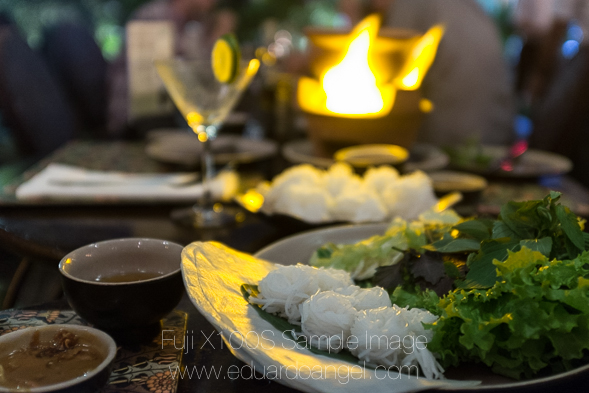
The Macro Mode focuses as close as 3.9″ (10cm). It works great and focusing is fast. Something to keep in mind when using the Macro mode is that if the Optical Viewfinder is on, the camera will switch to the Electronic Viewfinder.
Day 1. First issue.
After years of using Canon and Nikon DSLR systems, I naively assumed that all camera companies were up to date on battery technology. I was terribly mistaken. If there’s one issue with the X100S it is the battery life. Thankfully, and with proper planning, this is something that can be worked out.
The ONE battery I brought with me lasted a couple hundred images. Assuming I had not charged it completely I went through the same issue the following day. Finding digital gear overseas is often difficult, time consuming, and expensive. Locating batteries for this system in northern Thailand was a nightmare.
If you are planning to buy this camera, I’d recommend getting at least a couple of extra batteries. The original Fuji NP-95 is $38, but you can obtain much cheaper ($10) generic batteries, too. The best deal I’ve seen is this Wasabi kit with two batteries, charger, European plug, and car adapter for $20. A no brainer investment.
Why do you need a second charger? Well, it so happens that the Fuji charger does not tell you the percentage of charge that you have. It is either charging (the light on the charger is on) or full (the light goes off). For some reason, if you take a fully charged battery and attach it to the charger, it can take 10–15 minutes to show that it is full. To add insult to injury, it takes 180 minutes (three hours!) for one NP-95 to charge from dead to full. That’s 50% of the time the battery lasts under normal use without the LCD display. Fuji’s battery charger has no folding plug so it requires a long separate cord. One more thing to pack.
The battery issues continue on the camera: the battery-level meter simply goes from normal to dead in a few images. Just like that. Unlike a DSLR, a mirrorless camera sensor is powered up all the time, even if you are just focusing or reviewing images. If you use mostly the optical finder, turn the “OVF power save mode” on. The display’s info will be dimmed a bit, and the live histogram is no longer available, but it will greatly extend the battery life. I strongly recommend reading pages 18, 36, 41, 47, and 91 from the Camera’s Instruction Manual (available here as a PDF).
On paper, the NP-95 is rated for 300 shots per charge. After all these tweaks, I’m getting an average of 450 shots if I switch from EVF to OVF when possible, if I turn the camera off instead of keeping it on standby mode, and if I don’t use the viewfinder.
That’s a lot of ifs! The battery’s design is also poor, as it allows you to insert the batteries incorrectly and still be able to close the “battery-chamber cover.” You will know if you’ve done it wrong because the camera won’t turn on.
Having the battery life improved to a maximum of 450 pictures gives me about five hours, which is about a third of my working day when traveling. The poor battery performance and long charging cycles were by far the biggest drawbacks using this system on the road.
Focus
On several occasions I could not get the AF to lock, even in bright daylight. In low light the AF does hunt and it is slow. I also had a few instances where the camera “back focused” for no apparent reason.
The AF-C Mode (continuous auto focus mode) was extremely unreliable. The camera is simply too slow to track, lock, and capture a moving subject. Additionally, on AF-C Mode you can only focus on the dead center of the sensor. In my opinion, these two issues defeat the purpose of AF-C.
The manual focus works great. I love the focus peaking feature.
I absolutely love the hybrid viewfinder. It took me a couple of days to realize that the little switch on the front of the camera almost magically changes between the optical and electronic viewfinder.
Lens
The fixed 23mm f2 lens is very sharp, and impressively corrected for distortion. In combination with the sensor’s ability to capture noise-free images up to 3,200 ISO this makes shooting under low-light conditions bliss.
Low Light performance.
As you can see, low light performance is impressive. The sensor performs very well up to ISO 3,200 and decently up to 6,400. Relatively long exposures are not an issue.
Dynamic Range – Highlights and Shadows detail.
Another excellent spec; the detail that this tiny sensor can capture is truly remarkable.
Movie Mode
If shooting video is extremely important to you, stop reading this right now and consider another camera. The camera offers Full HD (1920 x 1080) at 30fps or 60fps and a decent 36MBps bit-rate. But, to access the video mode, you have to select “Movie” in the drive mode menu. You can’t use the optical viewfinder. Manual exposure can only be modified before you start recording. The ISO and ND are inaccessible while in video mode. In terms of quality, if you have good light, perfect exposure, don’t care about sound, can pre-focus, and the camera doesn’t move, the footage is decent.
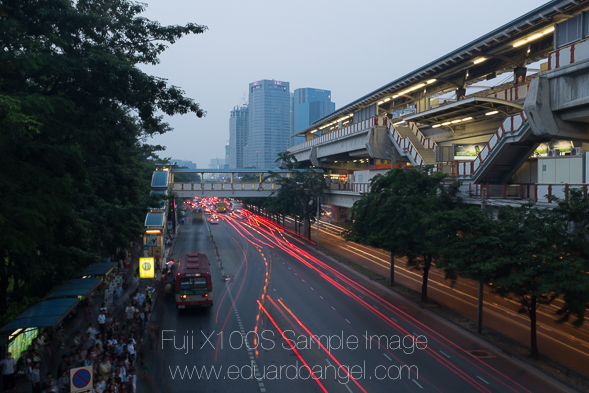
A three-stop neutral density filter is a welcomed feature. Unfortunately, it is not accessible during Movie Mode.
The built-in Panorama works well.
Workflow
I download and back up my images at the end of each day when I’m on the road. I also add key captions (locations, names, etc.) and a few general keywords. I wanted to create Smart Previews and edit them in my “down time” (doctors offices, the DMV, and long flights are ideal locations). That didn’t quite work out. On a two-year-old Mac Book Pro and a fast portable external Hard Drive, Lightroom 5 took on average two-and-a-half hours to import 450 RAW images, convert them to DNG, and build Smart Previews, which I still consider the best feature in Adobe Lightroom 5.
So, every night, after a day of working and lots of walking, I’d download the cards through Lightroom and charge the batteries, take a shower, grab something to eat, call my wife, return emails and phone calls, plan the following day, and…continue to wait because neither Lightroom nor the battery were ready.
Future enhancements
• I wish the camera had built-in GPS, which in combination with Lightroom’s Maps Module would make captioning images MUCH easier. My poor-man’s workaround is to simultaneously snap a picture with my cellphone at key locations. Since the phone adds the GPS information to the image I can later copy and paste the GPS coordinates to the relevant RAW and video files. Nothing fancy, but it works.
• It takes an annoying “long press” of the shutter button to wake up the camera from stand-by mode.
• If you’re shooting in burst mode, you can’t review individual images or zoom in/out. The images play back in a pointless slideshow. This was truly frustrating, as you can’t know if you got the desired image until you download the files.
Final thoughts
One day, many moons ago, as a student shooting for a newspaper, the photo editor asked me if I had more than one lens. I proudly answered, “Yes, I have three!” To which he replied, “Then use them! All your pictures look the same.”
That was a serious concern I had about spending a month with a single fixed wide-angle lens. I’m glad to report that the advantages in quality and weight greatly outperform this challenge.
Is this camera going to help me take better pictures?
Cameras are tools, no different from hammers or toasters, when you get down to it. I own very little gear because I prefer to rent the best tool for each job. That way I keep my overhead low and have access to the latest technologies.
That being said, after a few days getting used to the cluttered and somewhat illogical Camera Menu, I felt like shooting with my first Nikon FE-2, except now I had more than 36 frames and could switch the ISO as I pleased. There was, and is, an inexplicable emotional connection with the X100S—a feeling that I haven’t felt in a decade. Technically speaking, the camera is wonderful. But, there’s more to it. I can and want to take it with me everywhere I go. I have been taking more “snapshots” than ever before. I can get closer to my subjects, and shoot silently and almost invisibly.
If you have been drooling over this camera and are ready to pull the trigger, I hope this review provides that extra little push. It’s OK, go ahead and make the jump! You can tell your spouse that it was my fault. Please consider using our Amazon link. It won’t cost you a penny more, and it would definitively help support this site.
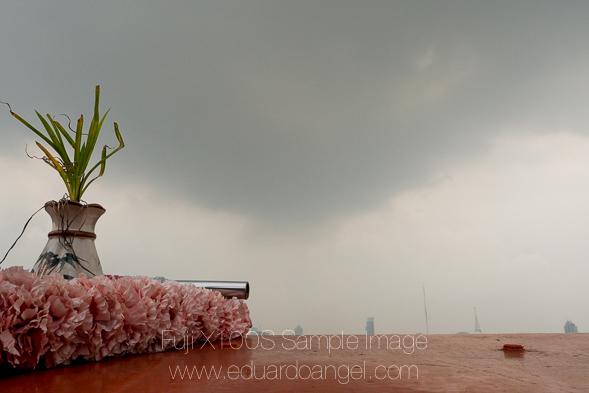
Feel free to leave your comments at the bottom of this page. Also, be sure to join me on Twitter and Facebook, and subscribe to our complementary Monthly Newsletter and our RSS feed.
Photography
Visual Serendipity 73: Neighborhood of make-believe.
This past weekend we came across a great exhibit at The American Museum of Natural History entitled, “Our Global Kitchen: Food, Nature, Culture,” that explores how food is produced and distributed throughout the world; from farm to fork.
This miniature from the exhibit reminded us of Mr. Roger’s Neighborhood of Make-Believe. (more…)
Photography
Visual Serendipity. Hearts and Tears.

Exquisite embroidered Hearts and Tears Drop Edging handmade the really old (turn of the century) way.
Photography
Discovering Cirque du Soleil Las Vegas: Visual Serendipity.
I recently met two acrobats from one of the eight shows in Cirque du Soleil Las Vegas. A multinational spectacle, Cirque du Soleil uses the imagination, arts and creative talent to present a show like no other. (more…)
Video
How to quickly enhance your photography portfolio.
On my previous post (I’d recommend reading it first if you haven’t) I walked you through my personal process to edit a large group of images into a more manageable portfolio.
Now is the time to enhance and fine-tune those “final” photos. (more…)
Photography
Visual Serendipity Week 69. Dreamy Landing.
Another Visual Serendipity image taken with my phone. An interesting aerial view of Las Vegas as I woke up minutes before landing. Nothing special, just pretty.
Video
Is Canon following Adobe’s steps?
Canon just released their “EOS Digital Solution Disk V28.1” software suite. As usual, it contains the “Digital Photo Professional”, “EOS Utility” and “Picture Style Editor” applications. So what’s the big deal? For the first time (as far as I can remember) the Solution Disk has been issued only on CDs, but this time it will be available as a download.No conspiracy theory needed here. The real reason behind the online delivery is that many new computers, including the latest Apple iMac (which is super fast and awesome) no longer come with CD drives, so we are all being forced to move to the cloud.
Support for Mac OS X includes:
• Mac OS X v10.8
• Mac OS X v10.7
• Mac OS X v10.6
And support for Windows OS includes:
• Windows 8
• Windows 8 (x64)
• Windows 7
• Windows 7 (x64)
• Windows Vista
• Windows Vista (x64)
• Windows XP
Keep in mind that you will need a serial number in order to download the software.
Supported cameras will include Rebel SL1, T5i and 1DC along with other updates.
And talking about Clouds and Adobe, on this post I added a link to Adobe’s MAX 2013 Keynote AND and a second link to the best deal for Cre¬ative Cloud I can find ($20 per month). Here’s a previous article on using Adobe Lightroom with Cloud Storage Solutions.
Photography
Visual Serendipity.

Shot and retouched on Google’s Nexus 4 Phone.
Video
Post-NAB 2013 wrap-up.
Our Digital Technology Resource is a monthly conversation about news, trends, and events for photographers and filmmakers. On our upcoming issue we highlight the most relevant products and trends we witnessed at NAB, including:
• Edelkrone SliderPLUS
• Redrock Micro One Man Crew
• Blackmagic Pocket and 4K Production Cameras
• Atomos Ninja 2
• Convergent Design Odyssey 7
• Tascam DR-60D and Samson Zoom H6
• G-Tech Evolution Series.
• Adobe Lightroom 5 and Premiere Pro “6.5”
• Imagine Products ShotPut Pro
It is never too late to sign up. Do it now!
Did you miss a previous issue? Don’t worry, be happy. Here are the links:
January 2013 Issue
February 2013 Issue
March 2013 Issue
Photography
Video
Expanding our International Workshops.
We are hoping to expand our Photography and Filmmaking workshops to Hawaii, Thailand, Nigeria, Kuwait and South America. But first, we would love to hear your feedback.
Please click here if you have time to answer a few simple questions that will help us a LOT.
Thank you in advance.
Video
Adobe Lightroom 4.4 is out. 25 new cameras supported.
Adobe just released a new Lightroom update making this version 4.4. Lightroom now officially supports over 25 different RAW file formats. Here is the complete list.
This version adjusts the White Balance for a number of Nikons, includes a correction to the demosaic algorithms for Fujifilm cameras with the X-Trans sensor, and adds support for new lenses like Canon’s EF 24-70mm f/4 L IS USM and Nikon’s AF-S NIKKOR 70-200mm f/4G ED VR are included. Unfortunately the Panasonic Lumix lenses are still missing.
According to Adobe, users are now (finally!) able to add contacts from their Address Book to email (on Mac). I’ll try this ASAP.
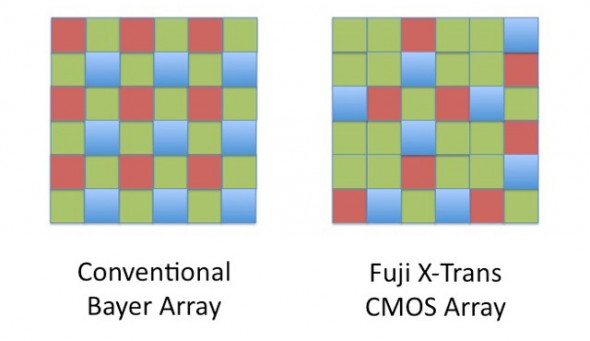 These are the main improvements added and bugs fixed:
These are the main improvements added and bugs fixed:
• The crop overlay tool resized incorrectly when used in conjunction with the “Constrain to
Crop” checkbox in the Lens Correction panel
• Background graphics were not correctly rendered within the Book Module
• Reading metadata from file would sometimes result in keyword and and GPS metadata to
not save for video files
• Updated the “Missing File Icon” for HiDPI / Retina dispalsy
• The supplied lens profile for the Sony RX-1 did not contain vignette information
• Preview in Develop Module was not updated with the latest adjustments
• Square tile artifacts while painting with brush
• Previews of photos in portrait orientation were blurry when viewed in the filmstrip in the
Develop module. (Mac only)
Click to keep reading (more…)
Photography
Video
NAB 2013 is here. Ghost Town goes wild with DSLR Shooters.
This coming weekend I’ll be working with Jem Schofield and a very talented crew on a unique DSLR Video Field Workshop in Nelson, Nevada. The event, hosted at an awesome Ghost Town and surrounded by incredible landscapes, focuses on the craft of filmmaking, camera movement and lighting controls.
Attendees will have four production stations to shoot:
• Tripod, Slider & Dolly Station (with actors)
We will learn how to properly balance a tripod system, operate a camera on a slider and how to use a proper dolly system (including being a dolly grip).
• Rigs Station (with actors)
How and when to use handheld and shoulder mounted rigs from a number of manufacturers to get different looks in camera. Students will focus on tracking shot and other set ups while filming live actors.
• Jib Station
Learn how to operate small to medium sized jib systems, to get “money” shots of the town for establishing shots, reveals, etc.
• Filters & Exterior Light Station
Controlling natural light for exterior shots using a selection of filters, reflectors and silks is paramount.
We’ll have great equipment from sponsors such as Genus, Ikan, Indie Dolly, Induro, Kessler, Lastolite, Manfrotto, Marshall, Nice Industries, Redrock Micro, Tiffen and Zacuto.
Check the video below, and I hope to see you there!
Registration includes round-trip transportation from Las Vegas Convention Center to Nelson Nevada Ghost Town, lunch and on-site instruction.
Video
Visual Serendipity – Middle Eastern Desert.
One of my unfulfilled travel dreams is (still) to visit an Oasis. While I did not get to see one, I did visit the desert right at the border between the United Arab Emirates and Oman, to witness a magnificent sunset.
To make the experience even better, I had the privilege to go on this expedition with David Burnett, a photographer I have deeply respected and admired for over 20 years. I was happily surprised to see him shooting with a Holga, a Ricoh GXR, a Leica M9, a Mamiya C330, a Mamiya 6×6, and even a Panasonic LX7 during the few days we spent together.
I like this picture, but it doesn’t really capture what I felt; the vast space of nothingness, the exciting isolation from “civilization,” the sunlight disappearing rapidly, and the warm breeze drastically changing its temperature within minutes…
Luckily, I did shoot several video clips that afternoon and plan to do something with them soon. Stay tuned.
Photography
Visual Serendipity. No Funny.
I respectfully disagree. I think it is pretty funny. Found at the storefront of one of the many “Halal” bodegas in my neighborhood.
Video
Traveling with photography and video equipment. Technical and Practical Tips.
These are some travel tips I’ve learned over 20 years of traveling with photo equipment. Most of the recommendations below will be most helpful for photographers shooting video.
• Format all your memory cards on the specific system you are planning to use them with (7D vs. 60D vs. H4N).
• Change and charge all your batteries before leaving.
• Test all your devices.
• Test that the software on your laptop is working. Trying to update the OS, an Adobe application, or plugins from an airport lounge or hotel’s WiFi is NOT fun.
• Match memory cards. The 7D takes CF cards and the 60D takes SD cards. Use the same capacity (32GB cards or 16GB) for each system at the same time. It will make your asset management on location much easier.
• Bring enough additional storage. Photographers tend to underestimate the size of video files. I can easily shoot more than 100GB in a day. And you will need a backup. Twelve minutes of video take approximately 4GB of space. With two cameras we then have 8GB. With a backup we now have 16GB for the same 12 minutes of footage.
• I recommend G-Tech hard drives. The G-Technology G-DRIVE Mini 500GB is an excellent product. Make sure your external hard drive is 7200 RPM (as opposed to 5400). It will make editing video much faster.
• Buy only hard drives with multiple Interfaces (USB 2.0, FireWire 400, FireWire 800). When (not if) your one and only USB port breaks, you won’t be able to retrieve your information.
• Bring a backup of all the essential items. My list includes: reading glasses, camera, lenses, memory cards, hard drives, chargers, card readers, all cables, and quick release plates.
• Use TSA-approved locks. I preferred padlocks and use the same combination on all of them.
• Simplify. I purchased my specific Android tablet because it matched the power adapter for my phone. And both can be charged via USB using the card reader cable, which is the same as Canon’s camera cable!
• Simplify some more. Bring a multi-card reader. I can simultaneously download the 7D’s CF Card and the 60D’s SD Card using the same reader and the H4N’s SD card using the laptop’s built-in SD card slot.
• Simply even more: One of the reasons why I purchased the 60D as my B camera is because it uses the same batteries/charger as my 7D. I also liked the fact that it uses DIFFERENT memory cards, so it is much easier to keep track what was shot with what.
• Before you leave, check the electrical plug/outlet and voltage information at your destination. Oman and the United Arab Emirates seem to use three kinds.
• Test your workflow. It goes without saying, but never bring new equipment to a shoot, especially overseas. Make sure your files work well with your software and that your cards work well with your cameras.
• If you are capturing Full HD video (1080p) you shouldn’t be using older/slower memory cards, otherwise you might experience dropouts and stuttering. Been there, done that. Not a good day.
• Don’t forget your business cards! The more the better.
If you’re nervous about upgrading gear or making the leap to HDSLR cinema we can help. Book a virtual one-on-one consulting session today!
Video
What to bring and how to pack when shooting overseas.
For a limited time, Tenba is offering a 10% off ANY item on their website using the Code: EduardoAngel
—
I have always been fascinated with bags and how photographers pack their gear. I remember reading the equipment lists of National Geographic photographers when I was younger. I used to wonder how they moved around the world with so much stuff.
Those times, as you might have noticed, are over. Nowadays, we need to deal with increasingly tighter airline safety, weight, and size regulations.
We have covered the “essential” video gear on previous posts. However, when it comes to deciding what to bring on a trip as carry on, what to check, and what to leave behind, the theory becomes much more interesting.
I tend to start with the personal stuff. Medicines, pain killers, toiletries, travel documents, etc. Some of these items are not easily replaceable; some are, but it would be inconvenient to forget them (think passport, credit cards, or headphones).
Disclaimer: The images below are taken with my phone, simply to illustrate this article. They are not intended to be fine art masterpieces of any kind. And yes, the “background” is my bed.
This is my “rolling studio” when shooting on location in New York. Add a fluid head tripod, monopod, three hot lights, umbrellas, cables and light stands. It is a lot, but two people can easily carry everything even on public transportation.
Click to keep reading (more…)
Photography
Random Unpublished Images.
I was looking for something else, and realized that I had a ton of relatively new, unpublished images. I grabbed 40 from my PhotoShelter unpublished galleries to share with you today. I hope you like them.
Around the World II – Images by Eduardo Angel
Video
What’s the big deal with ND filters?
What’s the big deal with Neutral Density (ND) filters? Do we REALLY need to use them when shooting motion? We created a short video tutorial using Canon’s (super awesome) EOS C300 to demonstrate what happens when you can’t really control the light (shooting outdoors), you have too much of it (bright day, noon) and you want to use the aperture as a creative tool, not only as an exposure compensation tool. Remember that when shooting video we pretty much set and forget the shutter.
The C300 has three built-in ND filters; ND1 (+2), ND2, (+4) and ND3 (+6). We don’t have that luxury when using HDSLR systems, but we can always get a very nice variable ND filter that covers up to 8 stops!
Check the video below:
Looking for answers to your workflow questions? Want to make the most of your new gear? Book a virtual or on-site consulting session today.
Photography
Photography
Video
Adobe Lightroom Tips and Tricks 005. Viewing Options.
Grid View, Loupe View, Info View. With so many options, which one should you use and when? Check the tutorial below and learn a few shortcuts that will help you speed up your editing process.
If you have specific questions or want to learn more, we are now offering virtual one-on-one sessions to give you customized solutions and personalized training no matter where you are in the world. Sign up now!
Photography
The Black Flower.
Staying home during a winter storm doesn’t mean I have to stop shooting.
“The dawn that she feared might never come would appear on schedule, just as it always had – and after it another, and another. And yesterday would become last month, then last winter, then last year, then two and five and ten years ago, and one day the people would have to stop and think before they could say how long ago it was .”
Howard Bahr, The Black Flower
Video
Schindler’s List Cut by Cut: Part 3.
After taking a deep look (check the first and second part of this post) into a famous and very important sequence from the film Schindler’s List, we begin to understand not only the relationship between Oskar Schindler (Liam Neeson) and Itzhak Stern (Ben Kingsley), but also the cinema ingeniousness of Steven Spielberg (director), Janusz Kaminiski (director of photography) and Michael Kahn (editor).
Here’s a poster we created that sums up all the cuts in the sequence altogether.
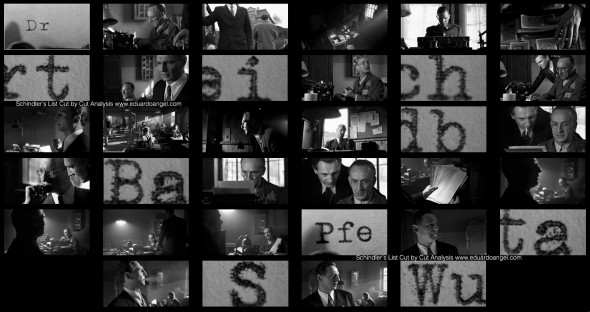
And here’s the complete sequence.
For those of you missed our Schindler’s List cut by cut analysis, here are Part 1 and Part 2.
Are there any other sequences that you would like us to review or break down cut by cut? Let us know by giving your thoughts and feedback in the dialog box below and we might just make it a future post!
Video
Visual Serendipity. Family Dinner Wes Anderson Style.
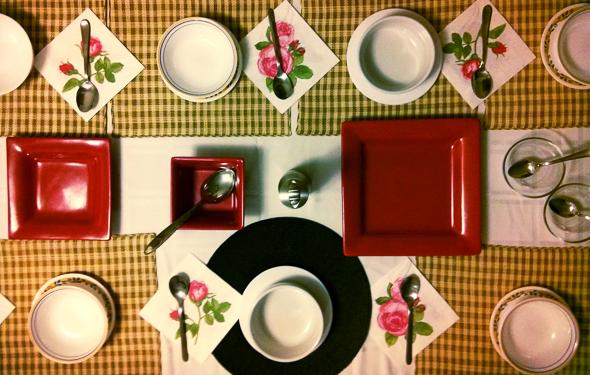
Family dinner at home. Shot with my brand new and awesome Google Nexus 4.
